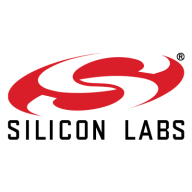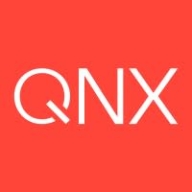

Micrium OS and QNX Neutrino are operating systems competing in the embedded systems category. QNX Neutrino appears to have the upper hand due to its advanced capabilities and scalability, making it appealing to industries requiring high-performance solutions.
Features: Micrium OS is appreciated for its compact size, adaptability, and cost-effectiveness, making it suitable for resource-constrained applications. It supports numerous microcontroller architectures. QNX Neutrino offers a microkernel architecture, fault tolerance, and real-time performance, ideal for complex, high-demand environments.
Ease of Deployment and Customer Service: Micrium OS provides straightforward deployment with accessible documentation for efficient hardware integration, supported by responsive customer service. QNX Neutrino offers a more comprehensive deployment framework with extensive documentation and support for complex configurations, delivering detailed customer service for sophisticated integration.
Pricing and ROI: Micrium OS offers competitive pricing focused on cost savings and delivering a high return on investment in smaller environments. QNX Neutrino incurs higher initial costs but delivers substantial ROI through enhanced functionality and reliability, especially in large-scale applications.
Micrium OS stands out in the embedded systems landscape for its versatility, reliability, and top-tier performance, making it a go-to solution across various industries. It shines in high-stakes environments such as medical instruments, automotive systems, consumer electronics, and industrial controls, showcasing its prowess in delivering precise, dependable operations essential in these sectors. Users laud Micrium OS for its stellar reliability, ensuring stable system functions critical for sensitive applications. Its efficiency maximizes system resource utilization, and its real-time performance is unmatched, catering to needs for timely task execution. The OS's ease of integration, flexible architecture, and detailed documentation further elevate its user appeal.
Adopting Micrium OS has led organizations to witness marked improvements in efficiency and productivity, streamlining workflows and fostering better collaboration. Its seamless compatibility with existing systems offers a smooth transition, minimizing the learning curve and hastening operational speed while reducing errors. The OS's customization capabilities allow it to meet specific needs, enhancing departmental performance and contributing to significant cost savings. Collectively, these attributes demonstrate Micrium OS as a comprehensive, efficient, and reliable choice for embedded system development, driving positive outcomes in organizational performance and goal achievement.
QNX Neutrino, a real-time operating system from BlackBerry, delivers robust performance for embedded systems across industries like automotive, aerospace, and telecommunications.
QNX Neutrino is designed for high-performance embedded applications, providing deterministic responses that are essential in systems where timing is critical. Its microkernel architecture ensures maximum security and reliability, making it a trusted choice for developing safety-critical applications. QNX Neutrino's ability to support multitasking and asymmetrical processing adds flexibility, supporting resource utilization across different hardware environments.
What are the key features of QNX Neutrino?In industries like automotive, QNX Neutrino powers complex systems such as Advanced Driver Assistance Systems, ensuring real-time data processing for enhanced safety. In aerospace, it supports flight control systems where reliability and timing precision are crucial. Telecommunications benefit from its scalability and fault resilience, enabling robust network infrastructure.
We monitor all Operating Systems (OS) for Business reviews to prevent fraudulent reviews and keep review quality high. We do not post reviews by company employees or direct competitors. We validate each review for authenticity via cross-reference with LinkedIn, and personal follow-up with the reviewer when necessary.